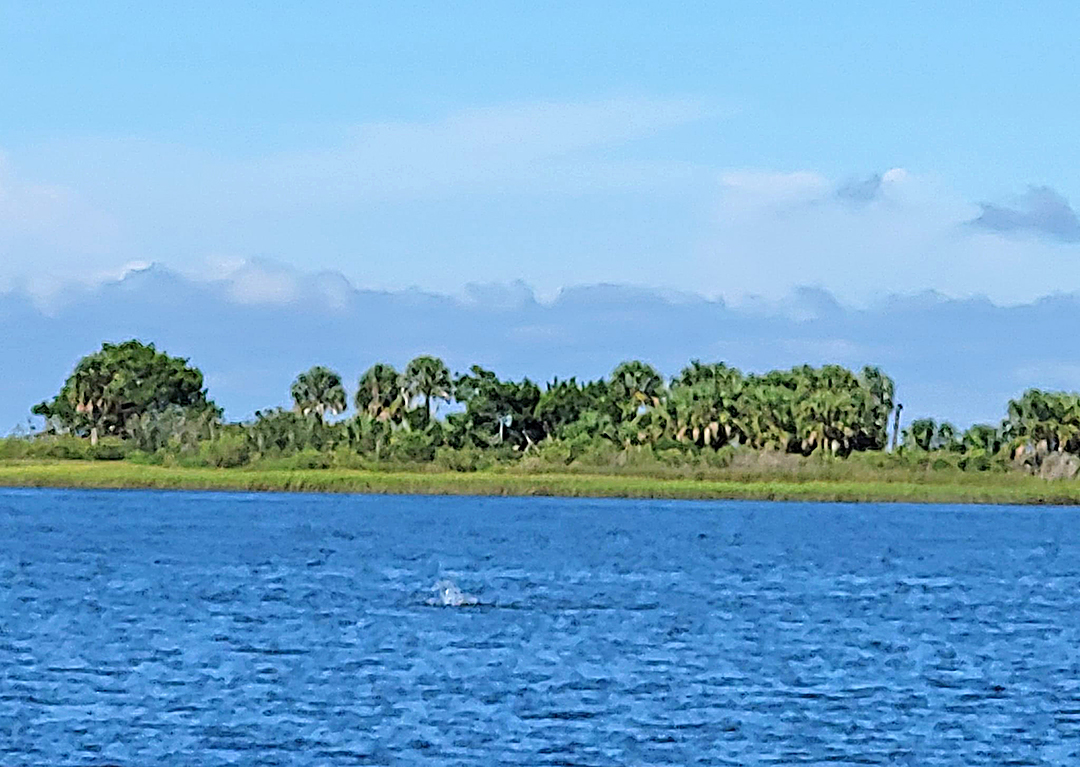Meeting held on river dredge piles
State agencies are looking at restoring the salt marsh along the St. Marks River; stakeholders question the benefit

Spoil from dredging the St. Marks River decades ago created “islands” of sand and rock in the marsh that have become grown over with cedar and palmetto. The FWC is studying the possibility of removing the piles and restoring the marsh.
By WILLIAM SNOWDEN Editor
About 50 people packed the Education Center at the St. Marks National Wildlife Refuge last week to hear a presentation on a proposal to remove dredge piles from along the St. Marks River and restore the salt marsh and to give input on the project.
The comments largely questioned the benefit of spending millions of dollars on trying to restore damage done decades ago. Attendees were given a presentation on Wednesday, Nov. 30, and the vast majority seemed extremely skeptical about removing the spoil and attempting to restore the marsh.
In fact, some questioned whether the project would make matters worse by trying to do the restoration work. The Florida Fish and Wildlife Conservation Commission has received some $2.1 million from the National Fish and Wildlife Foundation to study the matter. (The funding to NFWF came from BP restoration money.)
Some in the crowd estimated the actual restoration work would cost $18 million to $20 million and questioned the logic of the expense. Consultants noted that there is no current estimate for possible work.
And no decision has been made to go forward with the project. It was noted repeatedly that there are a total of 25 spoil piles from dredging along the river. Sixteen are on the west side of the refuge, covering 16 acres, and were the areas being looked at. (The other side of the river is Wilderness Area and heavy equipment is not allowed in there.)
The study will look at options including re-establishing salt marsh habitat; some work to create other habitat for birds; or do nothing.
St. Marks resident Chuck Shields, owner of Shields Marina, noted some of the dredge piles go back to the 1930s, when workers for the Army Corps of Engineers used dynamite and dredgeline to cut the Devil’s Elbow to make it easier for tankers to get in. In the 1950s, the river was dredged with a pump.
The dredge piles are dominated by cedar, prickly pear and poison ivy, said one consultant.
When asked why the refuge didn’t just use the millions to buy more property around the refuge, the answer came back that they couldn’t. The money is specifically for restoration of areas affected by the 2010 BP oil spill.
One person noted that the St. Marks Wildlife Refuge consists of 80,000 acres of which some 30,000 acres are salt marsh. “I don’t think these 15 acres will make much difference,” the person said.





